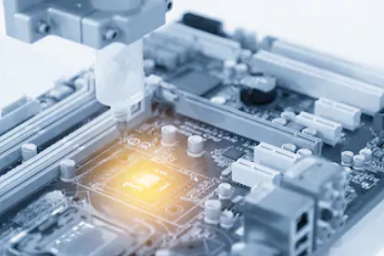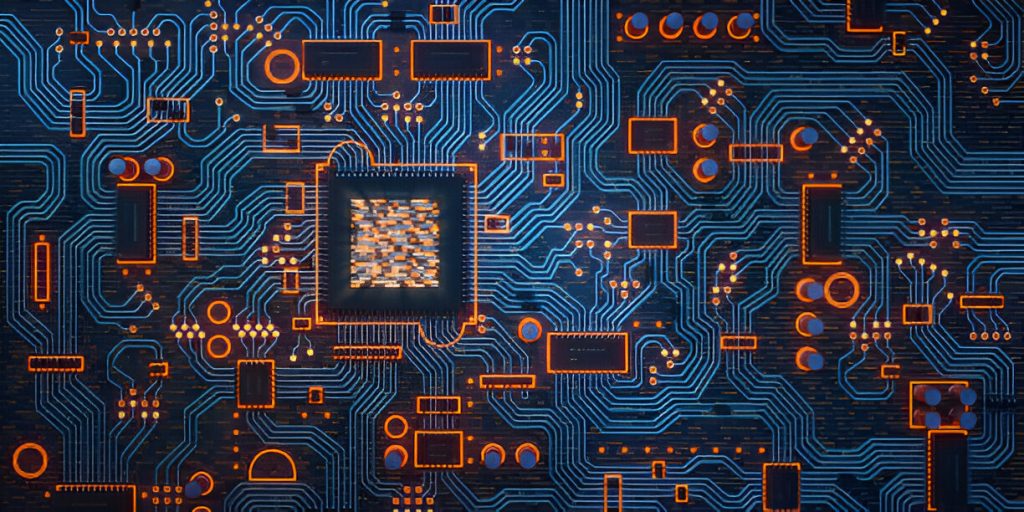
Once you’ve gotten a layout finished, it’s time to start thinking about moving the design into manufacturing and assembly. Truthfully, you should plan for manufacturing and assembly early just to ensure you can source all the parts you want in your design, but manufacturability is just one of many points to inspect in your PCB layout review before you submit your design for a formal quote with a manufacturer.
Before finalizing a design and releasing it for manufacturing, it’s best for an individual designer and their customers to put the layout through a comprehensive design review. Whether you’re working with an internal team or you’re engaging with an outside firm to supplement your PCB design needs, everyone involved in the project should go over several items in a PCB layout review as part of a design review. It’s even a good idea to go through periodic reviews during a project to ensure critical design requirements weren’t missed. Our PCB layout review checklist contains many design items we’ve found are essential for most layouts, and companies looking for layout services should know what they need to inspect in their finished designs.
Our PCB Layout Checklist
Before getting into the important points in a PCB layout review, it’s important to understand that every design and layout job is different. Not all of the items in this checklist apply to every layout, but they are things that have come up in our designs multiple times. The items listed below should be inspected in addition to the items on our DFM checklist as you prepare for production.
Board Thickness and Material Availability
This may sound totally basic, but even basic aspects like board thickness can be overlooked (I’ll admit that I’ve been guilty of this more than once). This should be checked at the beginning of the design to ensure thickness values can be met with the desired laminate materials. Many boards will simply be fabricated on the standard 1.57 mm board thickness, but something like a backplane can be on a very thick board spanning ~6 mm thick.
The issue of laminate availability is one that should be addressed before starting the design. If you’ve done the smart thing and engaged with a manufacturer early, you can inform them which laminates you want before you start designing the board. This is critical for controlled impedance designs, which need very specific trace width for a given material Dk value to ensure trace impedance has the desired value within tolerances. In the case where a desired laminate is unavailable, you should try to find a suitable replacement that has approximately the same dielectric constant and thickness to ensure impedance and loss goals are met.
PCB Routing Requirements
Different boards can carry a range of different routing requirements, depending on signal bandwidth, edge rate/center frequency, and other signal integrity tolerances. Here are some of the routing requirements that should be checked in a PCB layout review checklist:
- Trace width. Along with distance to the nearest plane layer, this value determines the impedance of your traces. Trace width should also be set to ensure manufacturability with high yield.
- Trace spacing. The goal here is to suppress crosstalk and ensure impedance control on differential signals.
- Length matching tolerances. The goal here is to ensure that skew is within acceptable limits. The best design tools will provide this functionality automatically and can generate a report that summarizes total skew on length-matched nets.
- Routing topology. Check that the routing topology on critical nets was implemented correctly.
- Via count. Every via on an interconnect will introduce some loss and reflections, particularly on impedance-controlled traces for high speed signals. To prevent signal distortion, via count is often limited to a small number of allowed transitions. On high speed nets, backdrilling should be implemented to prevent creation of a stub transmission line at very high bandwidths.

Plane Design and Arrangement
Plane layers in your PCB design, as well as polygons placed on signal layers, should be checked to ensure they can carry the required current and to ensure they are not floating. For power/ground plane pairs as part of a PDN, a simulator may be helpful for estimating the temperature rise in the board. If you’re worried about isolation and PDN impedance for high speed/high frequency boards, you should put the board through a post-layout simulation suite such as Ansys SIwave to check for EMI problems and verify PDN impedance is within spec.
BOM Cleaning
If the design process was started correctly, the BOM and design libraries should have been inspected and cleaned before beginning the PCB layout review. Verified component models should be imported and placed during the schematic design phase. This includes grabbing sourcing information from an electronics search engine, such as Octopart (full disclosure: Octopart is a current client). The goal here is to ensure the components are in-stock, the symbols and footprints are correct as verified by component manufacturers and datasheets, and that any potential replacements can be identified.
If components were selected correctly in the beginning of the design phase, why look at the BOM again before manufacturing? The problem is that the supply chain can move quickly and you desired components may be out-of-stock by the time you’re preparing for production. Prices can also change, which creates budget pressure on high volume orders. It’s also possible that something was simply missed while designing schematics; I’ve found that this often happens when using client-supplied libraries. Be sure to run through the BOM again to ensure footprints are correct and components can be sourced at desired quantities before finalizing the design.
Mechanicals
Mechanical items in the PCB layout reviewshould be checked for placement and clearances to other conductors. Mechanical elements like mounting holes and vias should be checked to ensure they have the hole right diameter, pad diameter, and drill depth. Some more complex mechanicals, such as guide keys or connectors, should be inspected in 3D to ensure there will not be any interference. Again, the best PCB design applications can perform these checks automatically with their internal DRC engine.
These are just some of the basic checks that should go into a PCB layout review checklist. Your manufacturer will perform other checks as part of their NRE and design review before they put your circuit board into fabrication and assembly. These include DFM checks, Class II/III inspection items, and even a full design review as part of turnkey manufacturing services. If you work with a design firm that can manage your manufacturing run, the design team can inspect some of these PCB layout review items before they get to the manufacturer, while can help prevent any delays in production.
The design team at PCBLOOP specializes in high speed and high frequency board design, and we put every board through a PCB layout review checklist and our DFM checklist. We work with a range of electronics companies, medical & automotive companies, and providing cutting-edge PCB design services. We’ve also partnered directly with EDA companies and advanced PCB manufacturers, and we’ll make sure your next design is fully manufacturable at scale. Contact PCBLOOP for a consultation.



Heyyy, my guy! How’ve you been, homie? Sick to see you, fam.
It’s almost too good to be true, but I’ve discovered a platform that could be considered a worthy counterpart to your project Ferrous material recycling processes
Take care, and keep on being awesome
Hello
Thank you for your comment and recognition.
I hope we can bring more knowedge and value to you and other audience.
Have a nice day!
I always was concerned in this topic and still am, regards for putting up.